

1:30 pm EST - 3:30 pm EST
Past Event
The year 2020 was among the most consequential in the history of American education. Events that defined the year for many Americans—the COVID-19 pandemic, presidential election, and protests over racial injustice—will impact traditional public, charter, and private schools for decades to come.
The COVID-19 pandemic, especially, has presented extraordinary challenges to schools, and schools have responded differently to those challenges. Some have offered in-person instruction while others offered remote or hybrid instruction. Some have kept the same grading standards, while others have switched to a pass/fail system. Meanwhile, the 2020 election is over, but the future of K-12 education policy remains in flux, including on school choice issues. For example, while the Obama and Trump administrations supported the expansion of charter schools, President-elect Joe Biden has taken a more circumspect approach, opposing for-profit charters and advocating stricter charter school accountability.
On Dec. 15, the Brown Center for Education Policy at Brookings and the National Center for Research on Education Access and Choice (REACH) cohosted a webinar that examined the changing landscape for U.S. schools and education policy. The webinar featured two panel discussions. The first considered how U.S. schools have responded to COVID-19, including why traditional public, charter, and private are responding differently. The second considered what to expect for school choice reforms in the years ahead, especially with the change in administrations. Panelists shared perspectives on what we have learned from this tumultuous year, what we still need to learn, and what research can tell us to improve school choice policies in the months and years ahead.
Douglas Harris, the National Director of REACH, moderated the first panel, inquiring about how, why, and when different school districts chose to reopen. For J.R. Green, the superintendent of rural Fairfield County Schools in South Carolina, access to technology was a major factor in his district’s reopening plans. Many in Fairfield don’t have access to high-speed internet, and even mobile hotspot devices may not work in rural areas. Still, half of Green’s families chose to keep learning virtually when the schools reopened. “There are some parents and students who really have thrived in this new virtual environment,” he said. The district now plans to open a virtual school post-pandemic.
An even higher share of students and staff in Detroit—around 80%–have chosen to work and learn virtually, said Terrence Martin, Sr., President of the Detroit Federation of Teachers. Betheny Gross, Associate Director of the Center on Reinventing Public Education, noted that as of November, 13% of rural districts were fully remote compared to 54% of urban districts. Both Green and Martin said that COVID has hit communities of color particularly hard, and as a result many families in predominantly Black school districts are afraid to come back to school.
While schools in South Carolina and Michigan could choose whether to reopen or not, the state of Rhode Island took a more “active role” in re-opening plans, said Angélica Infante-Green, Commissioner of Elementary and Secondary Education in that state. Schools had to reopen if they met certain safety metrics, although families could choose to learn virtually. Rhode Island also included private, parochial, and charter schools in its reopening plans, including the distribution of personal protective equipment. “It was a whole state initiative and we were rolling in the same direction,” said Infante-Green.
Green is skeptical that Rhode Island’s approach would work in South Carolina, where there’s less trust of orders from state government. “The fact that it was local teachers and me and administrators and bus drivers and cafeteria workers who really came together … elicited a certain level of trust with [families],” he said. He noted that fewer than half of states issued health-based guidelines for re-opening, and even then, benchmarks varied greatly.
Finally, the panelists discussed what learning would look like post-pandemic. They agreed that schools must be prepared to address the long-term trauma that the pandemic has caused and how that may affect children’s mental health.
Brookings senior fellow Jon Valant moderated the second panel, which examined the state of education policy and politics at the end of the Trump administration, looking especially at the state of school choice reforms.
The panel opened with a discussion between about Secretary Betsy DeVos’s legacy between James Blew, Assistant Secretary for Planning, Evaluation and Policy Development at the U.S. Department of Education, and Jennifer Berkshire, host of the “Have You Heard?” podcast. Blew urged that Americans not judge DeVos only by her policy record but by how they got a conversation going about school choice and “if the current system was working well.” Berkshire contended that DeVos’s main legacy will be political—that her narrow focus on individual choice undermined longstanding bipartisan support for issues such as competition and accountability.
The conversation turned toward what the federal education policy should and will be. Frederick Hess, the Director of Education Policy Studies at AEI, argued for a limited federal role that focuses on priorities like research/transparency and trustbusting. Preston Green, a professor from the University of Connecticut, emphasized its role in assuring equal access and educational opportunity. He cited personal and family experience as evidence that the federal government—including the courts—play essential roles in protecting students’ civil rights.
Looking ahead, Hess believes that the narrow margins in the House and Senate have implications for the Democrats’ policymaking prospects. He believes they can hold their coalition together on matters related to increased federal spending for schools but will struggle to sustain support for more ambitious and progressive policies, including bolder attacks on charter schools and much of the party’s higher education agenda. The panelists shared concerns about growing divisions within and between parties. Berkshire, in particular, highlighted the failure of the Democratic Party to connect with rural Americans, even on fundamental issues such as the purpose and potential of education.
Moderator
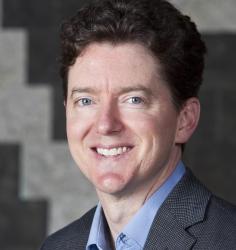
Panelist
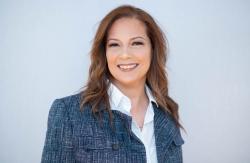
Moderator
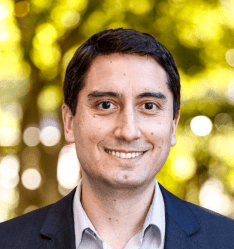
Panelist
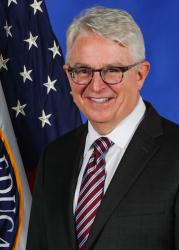
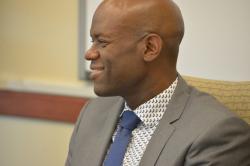
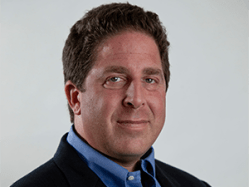

Michael Trucano, Sopiko Beriashvili
April 25, 2024
2024
Online only
9:00 am - 10:00 am EDT

Kelli Bird, Ben Castleman
April 23, 2024